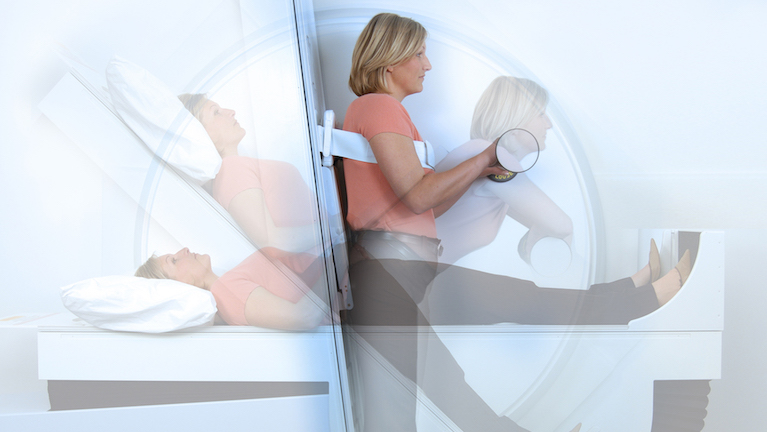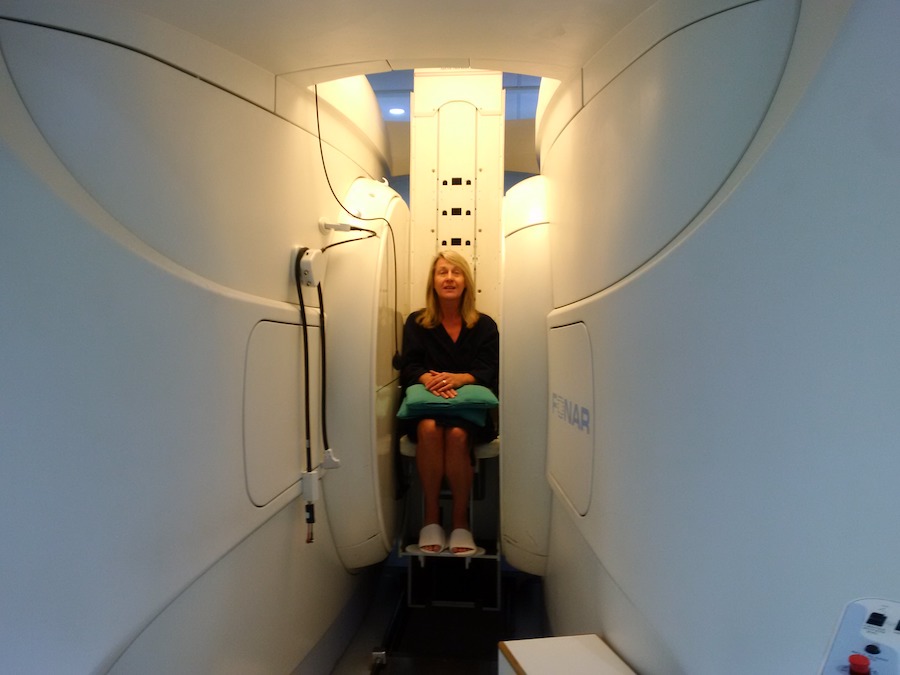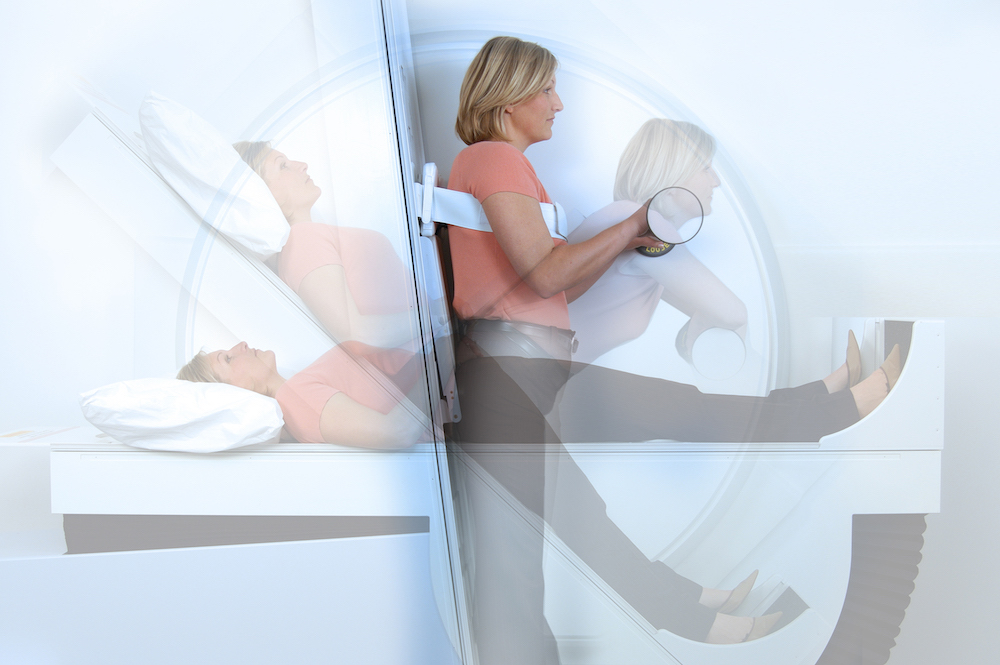Lorraine Woodcock’s claustrophobia meant that having a traditional MRI was impossible – but an upright open MRI scanner has changed that. Anna Magee reports
Lorraine Woodcock was putting something in her car when her back suddenly went into spasm.
‘I was immobilised for three hours until I could get a doctor to the house,’ remembers Lorraine, who is a PA from Surrey, where she lives with her husband.
‘I was given an injection and three different types of painkillers so that I could eventually move.’
While Lorraine’s initial spasm subsided, she now has lower back pain that radiates down her right leg; pain she has had for 12 months.
Back pain costs the NHS £1 billion a year
As a lifelong exerciser, Lorraine is eager to have answers to her troubling pain, in order that she can have treatment and once again be able to be fully mobile, enjoying the fitness classes and regular walks that have kept her slim and well for years.
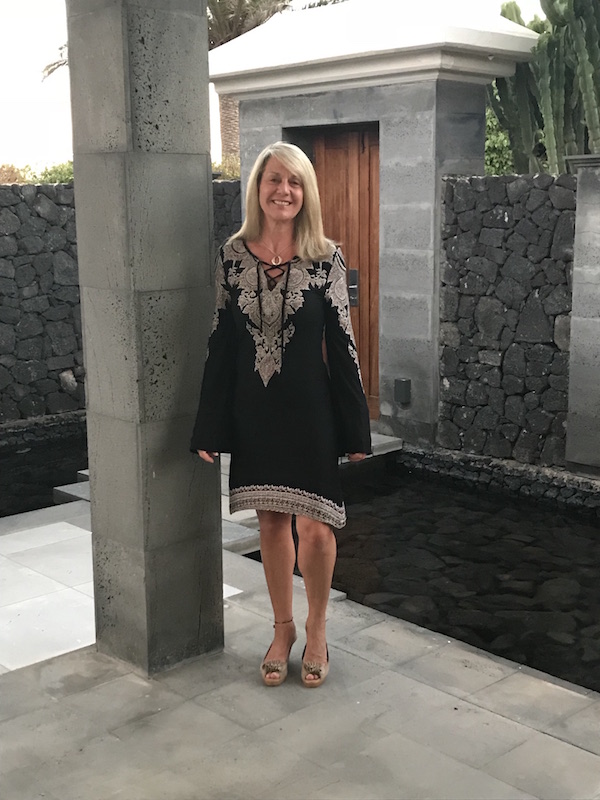
Lorraine is not alone. An estimated 2.5 million people experience back pain which costs the NHS more than £1 billion a year.
Now, a new survey suggests that over half of people with back pain said it troubled them at least several times a month, with 56% describing it as either somewhat or very severe with one in seven suffering every day.
Moreover, the research on over 2000 people also found that, like Lorraine, a fifth have been forced to give up a favourite pastime such as sport or going to the gym.
Lorraine says that her specialist, Dr Courtney Kipps, a consultant in sports and exercise medicine was initially concerned about either a pinched or trapped nerve caused by a prolapsed disc and thought an MRI would help to make a confirmed diagnosis.
‘I have been referred for two MRI (Magnetic Resonance Imaging) scans in the past but wasn’t able to get through either,’ says Lorraine.
‘During the first one, I had to be taken out of the scanner after a couple of minutes. And with the second, I just couldn’t go through it at all.
‘Both times it was the same – my heart begins to race, and I am overwhelmed with anxiety, and I feel like I absolutely have to get out of there.’
What happens during an MRI?
During a traditional MRI scan, you lie on a flat bed that’s moved into a circular scanner which is hollow.
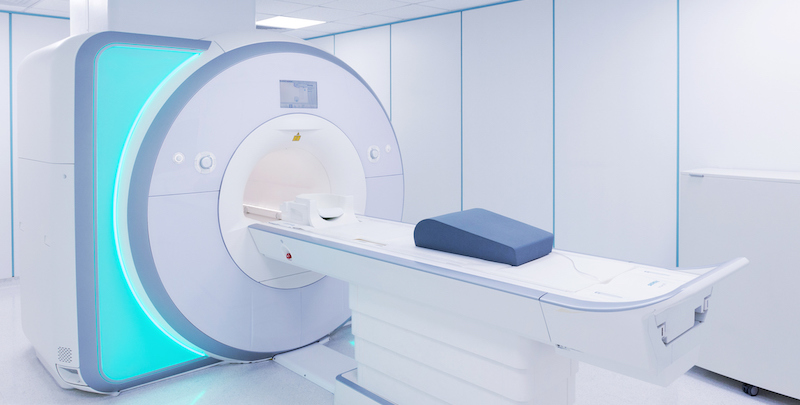
Depending on the part of your body being scanned, you’ll be moved into the scanner either head first or feet first. You may also lie face up or face down.
For example, a woman having her breast scanned would go in face down and head first.
However, for her lower back pain, Lorraine had to go into the traditional MRI scanner head first and facing upwards.
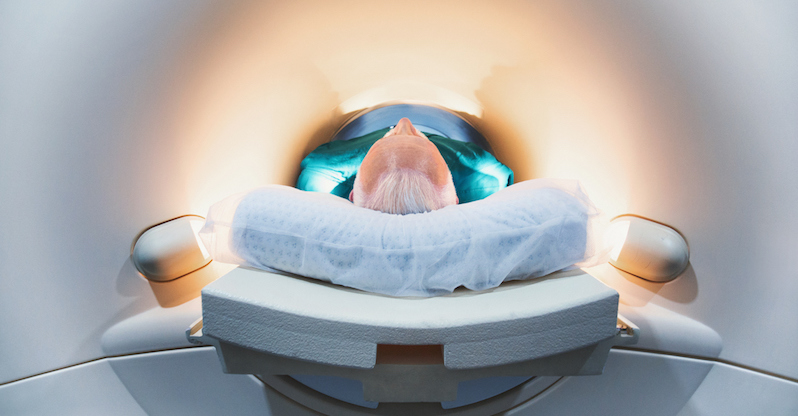
‘Once they had moved me into the cylindrical hollow of the scanner, the top of it felt like it was just centimetres from my face. I found that so terrifying, I felt closed in’.
At certain times during the scan, the scanner will make loud tapping noises.
‘Then when the noise started, I just couldn’t stand it. I felt so stupid not being able to handle a simple MRI scan, but there is just no way I could do it. It was impossible for me. Even trying to breathe through it didn’t help’.
Lorraine is one of almost eight million Brits that suffer with claustrophobia, which is a fear of enclosed spaces. For many of these, the closed in nature of traditional MRI scans make them unbearable.
It’s estimated that some 4 million MRI scans are performed annually across the UK.
What if I am claustrophobic?
According to the new research released this week, 17 per cent of those who suffer with back pain in the UK, also suffer with claustrophobia.
As a result, an estimated half a million MRI scans may be disrupted each year by claustrophobic patients; disrupted meaning re-scheduled, aborted during the process, delayed due to a request for sedation or cancelled altogether.
Now, Upright Open MRI scans – done while a patient is upright and looking out – are slowly changing that (pic below).
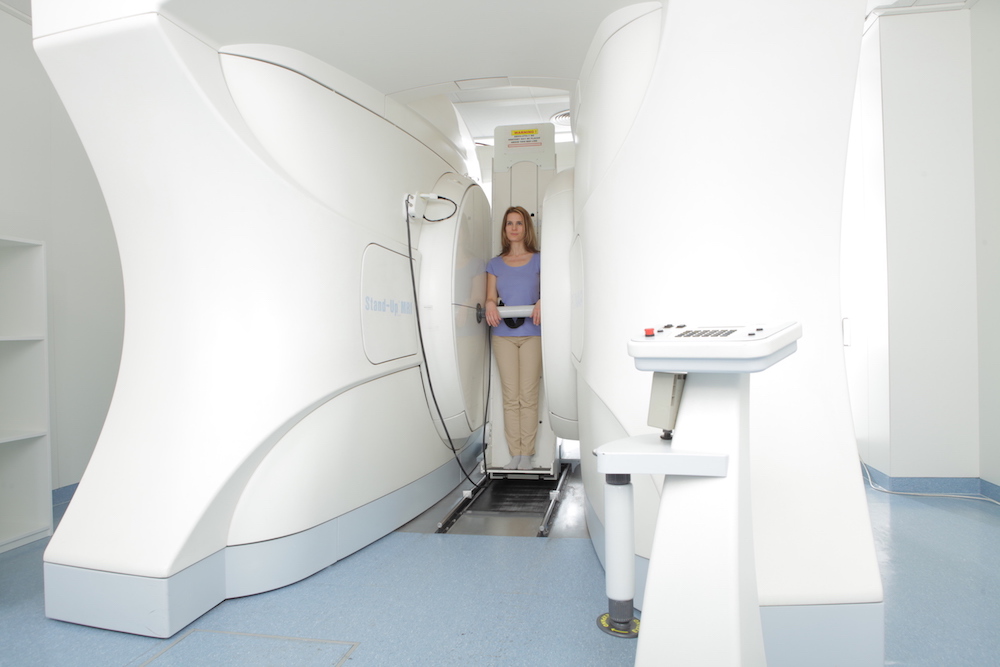
For Lorraine Woodcock, who today is having it for the first time after, this represents her only chance at finally getting a reason for her chronic back pain, and subsequent treatment.
‘I did some research online and realised these open MRIs were an option, so I spoke to my consultant about it,’ says Lorraine.
Lorraine sits in a chair from which she can see out, onto a screen that plays Rick Stein’s Mediterranean Escapes on a DVD.
Each scan takes about four minutes and there are three in total. Lorraine sits through all three, looking relaxed, smiling and happy throughout.
As Lorraine watches her cooking programme, the scanner goes to work. I have had two traditional MRI scans myself and I also noticed, this one is much quieter.
MRI utilises a large magnet, radio waves and a computer to form images of your body and the traditional one, contains the magnets in a cylindrical tube.
With an Upright Open MRI, you can have a scan sitting or standing, in an unenclosed space because the design of the system enables the patient to be positioned in different postures, allowing access from different angles.
Why is Upright Open MRI different?
‘With the Medserena Upright Open MRI scanner, patients have nothing in front of their face at all so there is no feeling of claustrophobia,’ says Professor Francis Smith, Medical Director at Medserena’s Upright MRI Centre in London (they also have a clinic in Manchester).
‘All coils (magnets that function as scanners), even the head coils for brain scans, are designed to allow patients to clearly see outside the system, he explains.
‘The procedure is conducted in a natural weight-bearing position, so the patient can stand up, sit down, flex their neck and be moved into different postures – thereby allowing the scan to be carried out in exactly the position that pain is experienced.
‘Indeed, this means some conditions may be underestimated or may not even be seen at all in a traditional tunnel MRI scanner.
‘For example, this type of MRI scan can offer a thorough, more conclusive diagnosis of conditions than a traditional MRI scan, ranging from whiplash, pelvic floor disorders and breast implant leakage to problems with the spine or neck’.
So what did Lorraine think? ‘It was much kinder than the traditional MRIs I have had in the past,’ she says. ‘I could have sat there all day – even the noise wasn’t as bad – the whole experience was really comfortable.
‘And I was quite enthralled by Rick Stein’s programme so I clearly wasn’t feeling any claustrophobic effects.’
Following her Upright Open MRI scan at the Medserena Centre in London her consultant Dr Kipps was able to diagnose Lorraine’s conditions, which turned out to be nothing a little physiotherapy couldn’t fix.
‘The scan showed that my two bottom discs were dehydrated compared to the other upper discs and as a result, the muscles surrounding my lower left back were working hard to protect it’, says Lorraine.
That resulted in the muscles tightening and not doing what they should do, which is to provide adequate support for Lorraine’s back, resulting in significant pain.
‘I am booked in for physio sessions to help rectify the tightening of the muscles which should in time release and I am also able to carry on with the gym as long as I listen to my body when it tells me to stop.
‘With physiotherapy to strengthen the tight muscles in Lorraine’s lower back, the pain should soon ease and she will be able to get back to the gym,’ says Dr Kipps.
‘I’m delighted to finally know that there isn’t a serious problem,’ says Lorraine.
‘Unfortunately, it was only after my previous experiences with conventional tube MRI’s that I started researching alternatives on the internet. Sadly many people do not realise or have the knowledge that an Upright Open MRI scan is out there.’
Upright Open MRIs are also helpful for obese people who otherwise might not find traditional MRIs possible.
You may be suitable for a consultant referral for an Upright Open MRI on the NHS (talk to your consultant). Privately, your health insurance company, for example BUPA should pay for this. If you elect to self-pay, at Medserena the cost for an upright open MRI scan starts from around £595 for a joint scan.
For more information, log on to: back-pain-mri.com and fear-of-mri.com
Backcare Awareness Week runs from October 8-12th
Related Healthista content:
6 causes of lower back pain and how to fix them without painkillers
Back pain left this woman on morphine – then a new gadget changed everything
10 minute yoga sequence for back pain
back pain – 10 ways to help yourself using the power of your mind
7 surprising ways to get rid of back pain
Like this article? Sign up to our newsletter to get more articles like this delivered straight to your inbox.



